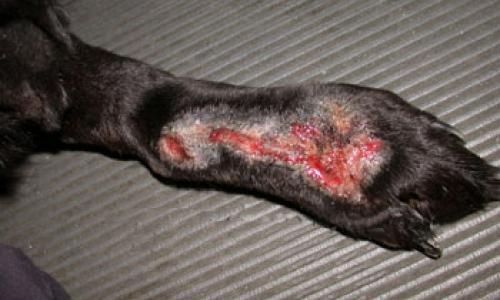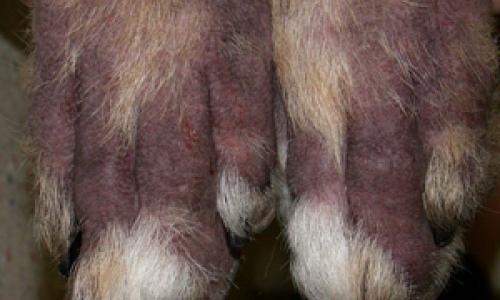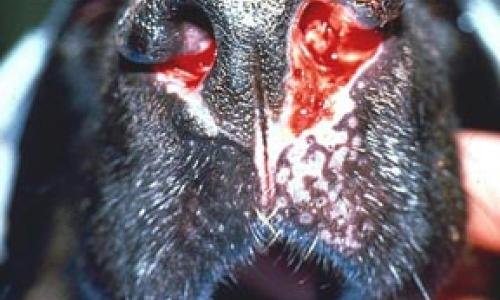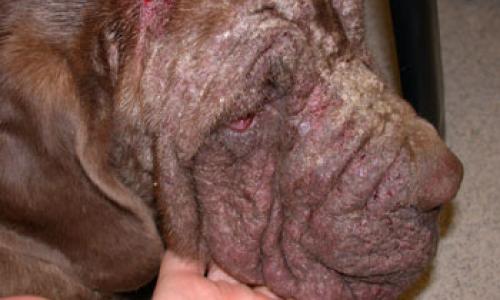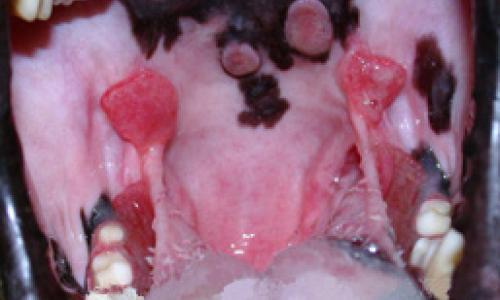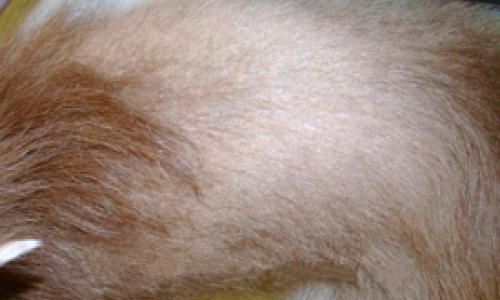Pet & Animal Disease Index
-
Acral Lick Granuloma
An acral lick granuloma is a lesion, usually located on the distal part of one of the limbs of dogs, which is caused or worsened by the animal's obsessive licking of it.
View disease -
Alopecia X
Alopecia X is diagnosed based on clinical signs and blood tests to rule other causes of hair loss such as hypothyroidism, Cushing's disease, or elevated sex hormones from testicular or ovarian sources.
View disease -
Atopy
Clinically known as atopy, inhalant allergy is a hypersensitivity to environmental allergens manifested through irritation of the skin and ears.
View disease -
Blastomycosis
Blastomycosis is a severe systemic infection caused by the fungal organism Blastomyces dermatidis. The organism grows in the soil in specific regions of the country, including the Missouri, Ohio, Tennessee, and Mississippi River valleys.
View disease -
Calcinosis Cutis
Typically caused by long term steroid use (oral or injectable) or increased cortisol levels (Cushing’s disease) in which calcium deposits form in the dermis of the skin. Less commonly can be due to atypical systemic infection, or exposure to environmental calcium.
View disease -
Canine Demodicosis
Canine demodicosis is a type of mange that occurs when abnormally high numbers of a mite called Demodex canis multiply on the skin.
View disease -
Canine Eosinophilic Granuloma
A rare disease in dogs that usually affects the mouth but can affect the skin.
View disease -
Canine Recurrent Flank Alopecia
Patchy hair loss including bacterial demodex, or ringworm infection, or hormonal diseases such as hypothyroidism and Cushing's disease. These diseases should be ruled out by appropriate testing.
View disease -
Cheyletiella
Dogs and cats affected with Cheyletiella mites can either be intensely itchy or hardly itchy at all. They will frequently get a dry scale along their backs, which can spread to more severe and body-wide scaling. As the infection progresses, the itching becomes more severe. Patchy hair loss can occur due to severe scratching. Some cats may have very few signs other than self-induced hair loss from chewing/pulling out their fur. In humans, Cheyletiella mites cause a red raised rash on the arms, trunk and buttocks that eventually turns into a yellow-crusted area. Human infections usually resolve in 3 weeks if the host animal is treated.
View disease -
Color Dilution Alopecia
This is a genetic defect affecting the way pigment is distributed in the hairs of affected dogs. Dogs with unusual haircoat coloration such as blue or fawn are affected. Abnormal pigment (melanin) clumping in the hairshafts and subsequent changes in light refraction are responsible for the unusual coloration, and in severely affected animals, excessive pigment clumping causes breakage of the hairshafts and abnormal or stunted hair growth.
View disease

